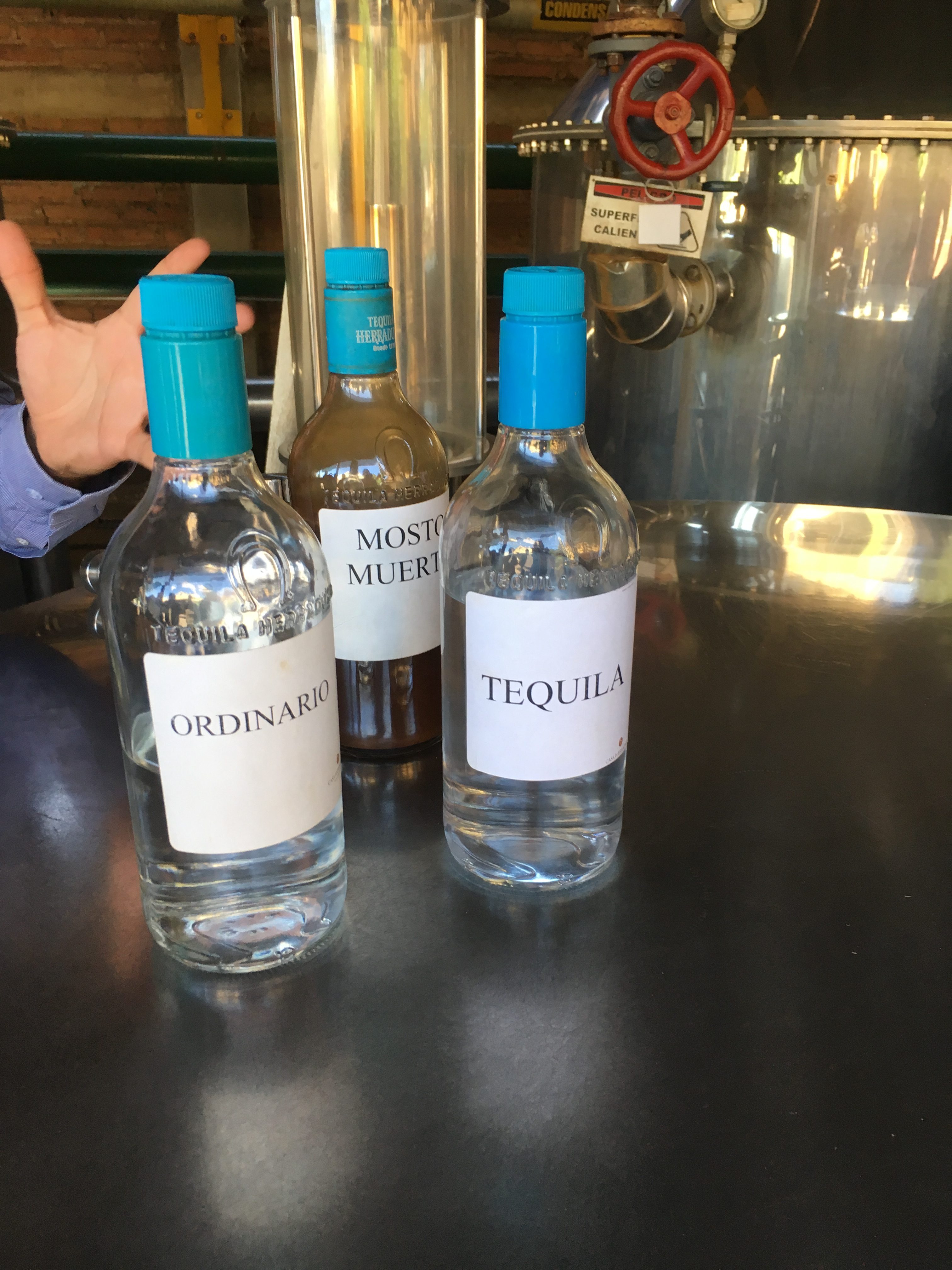Stop doing that! That branded plastic sombrero you got from tourist factories like Señor Frog’s? Those ‘80s party-dude, spring-breaking beach movies? And your visions of Pee-wee Herman cycling past talking chairs to a mariachi soundtrack! Delete all that tat from your mental hard drive.
Tequila is nuanced, with all the complexity and rich history of any whisky trail single malt.
You may have learned the hard way to respect tequila for its effects when used in quantity. Now respect it for its quality.
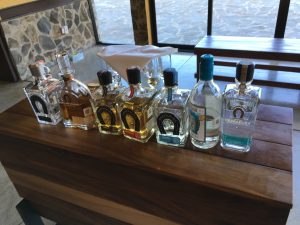 This past week in Mexico, a handful of media writers and a salty phalanx of service industry decision-makers were treated to an education in tequila making (and enjoying) courtesy of producers Casa Herradura (CH).
This past week in Mexico, a handful of media writers and a salty phalanx of service industry decision-makers were treated to an education in tequila making (and enjoying) courtesy of producers Casa Herradura (CH).
Between tours of the region and factories, we were indulged with surprising and clever food pairings in endless abundance. The result was a handful and phalanx of exhausted converts.
Here are a few tequila facts to drop at your next soirée.
Tequila comes from the desert valley surrounding the city of, big surprise, Tequila. This region’s land and arid climate are ideal for growing the blue agave Tequilana Weber. It’s named after the European botanist, Weber, who classified this hardy cactus-like darling of a plant. Typical old-world arrogance.
People in Mexico have been enjoying fermented agave since long before the European incursion.
However, tequila is less Mexican than you may think. By law, the agave must be grown and harvested in only 5 states of Mexico’s total of 31. And even then, only certain designated regions of the 4 states contiguous to Jalisco — pronounced ha-LEESE-coe — where the cities of Tequila and Guadalajara lie.
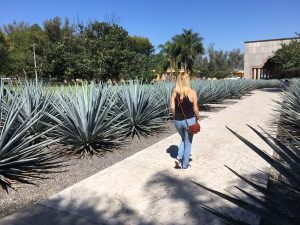
Bottom line? Like Scotch must be made in Scotland, if your bottle isn’t produced in the Tequila region and certified by Mexico’s regulatory agency, the CRT, it ain’t tequila. (Just imagine the hoser uproar if only Southern Ontario could use that famous donut-shop appellation for Canada’s national drink, the double-double.)
Herradura means horseshoe.
When CH founder Aurelio Lopez first began producing tequila in the 1870s, the vast majority of the market was illiterate. Illiterate doesn’t mean stupid, like those frat boys at Señor Frogs, just not educated. Lopez, a visionary early modern marketer, recognized the need for a logo to stand out on the shelf. Just like in Canada, horseshoes are lucky symbols in Mexico. Hence the horseshoe in his company’s logo. (FYI: Casa means house. Visionary Canadian marketers should note how the alliteration in Horseshoe House could catch on here.)
Every tequila maker has their own schtick when it comes to being unique. CH’s own main point of difference further commands respect. They only use natural airborne yeast in fermentation.
WTF? If you normally associate the words yeast and Mexico differently, be seated. Yeast is a minute single-cell fungus that consumes sugar to produce alcohol.
Yes, alcohol is essentially yeast piss.
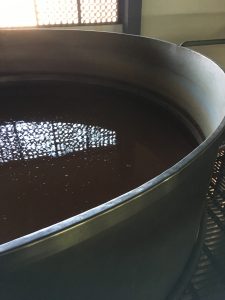
Note the photo here. The bubbling concoction is open to the air. But that is not boiling you see — this distillation is room temperature — the bubbles are those aforementioned natural yeasts doing the Lord’s work.
The official CH property contains only a few token blue agave plants. (The real supply is grown nearby and in the highlands.) But these few onsite agaves aren’t merely austerely decorative.
Just as notable here on the CH distillery grounds are the many fruit trees and blooming flowers. The shade, scents and garden vistas they provide during your tour of the factory are agreeable but their primary function is to flavour the naturally occurring yeasts in the air.
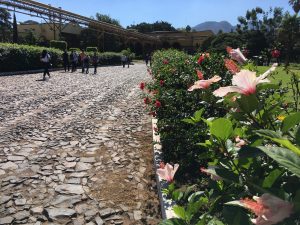
Margaritas are great — in fact, you can use tequila as the base liquor in absolutely thousands of drinks — but good tequila is best enjoyed naked. Or with clothes on but unadulterated by any other liquids including ice.
Any glass will do but a tall thin one, like a champagne flute, encourages the migration of the scents to the nose. Hold the glass up the light. The colour of the liquid marks how the tequila was barreled. That’s why some tequilas are clear, some goldish and some dark amber.
Now give the glass a shake, then observe whether the tequila clouds up and how long it remains cloudy. Less cloud means better quality (hence your foggy Señor Froggy memories).
Just after the shake is also a good time to breathe in its vapours. The experts at CH suggest holding the glass about an inch from your face and breathing deeply through the nose (duh) but with your mouth slightly open. The action doesn’t just look funny, it employs the taste buds in the experience.
Now taste your tequila but gently.
If you’re surrounded by chants of ‘just give ‘er’ and ‘three tequila, floor’, exit the room immediately and bring the bottle with you.
Just sip a drop or two and let it roll around your tongue for ten steamboats while drawing breath through the nose and exhaling. Now you may swallow, sipping breath through the mouth to spread the love.
Now ask yourself what’s happening throughout your mouth. What do you notice? There are no wrong answers.
Deafer palates may not register all the subtleties at first but, if patient, you’re blessed with an exciting glimpse of how much more there is to learn. During our tasting session, even the most hammered of the service industry members took prizes over us useless writers, noticing ‘notes of vanilla’, ‘trills of citrus’ and ‘finishing cadences of cinnamon’. Not me.
Most of the distillery tour was conducted outdoors. The thick sunscreen on my nose tip and upper lip overrode any subtle notes of plantain in the olfactory system with whole-note power chords of coco-butter. But I was briefly blessed with that glimpse and respect it.
